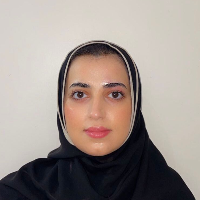ICDS 2025

King Fahad medical city, Saudi Arabia
Abstract:
Background: Reports revealed rising levels of skin diseases secondary to
protective equipment use. Healthcare providers who are working day and
night during the pandemic of COVID-19 are more susceptible to the damage
of the skin. There is scarce published data about the incidence of skin
disorders secondary to protective equipment use during the COVID-19
pandemic and what factors are associated in Saudi Arabia. Aim: Assessing the
potential skin damage as a result of personal protection equipment (PPE) and
intensive hygiene measures for healthcare providers during COVID-19
pandemic in Aseer region. Methods: This study a cross-sectional questionnairebased study done in Aseer region from January to October 2021. Personal data
and related to history of skin disease, practices toward personal protective
equipment, and new skin damage was collected and analyzed. Independent ttest and chi-square test was used to determine factors associated with the
incidence of new skin damage during the COVID-19 pandemic. Results: Total
of 214 participants was included in the study. (47.7%) of the participants
reported experiencing new skin damage during the COVID-19 pandemic,
while 112 (52.3%) of the participants did not. Age, having a history of chronic
skin disease, and number of worn gloves layers were all significantly
associated with the incidence of skin damage during COVID-19 pandemic.
Conclusion: The considerable rate of new skin damage during the COVID-19
pandemic makes it essential to take action and start rising awareness toward
this topic among health-care workers as well as teaching them how to prevent
the incidence of new skin damage.
Biography:
Dr. I.litehaj Sultun Mi›li is a dedicated Obstetrics and Gynecology Resident PGY2 at the Saudi Board, with a Bachelor's Degree from King Khalid University, KSA. She's published research on women's health topics, presented at international conferences, and actively volunteers in healthcare initiatives. Dr. Mi›li's passion lies in improving women's health outcomes through research, education, and community service.
